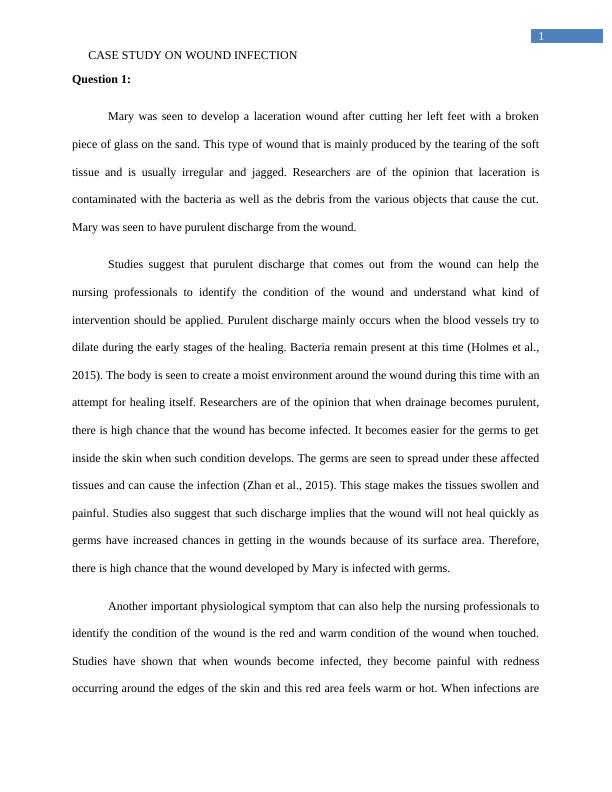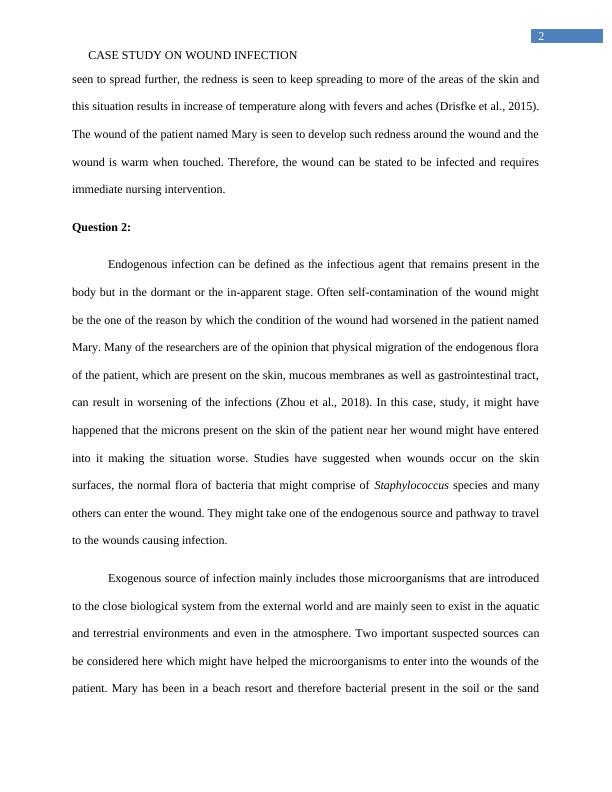Case Study on Wound Infection
8 Pages2139 Words86 Views
Added on 2023-06-04
About This Document
This case study discusses the symptoms, causes, and treatment options for wound infection. It explains the stages of wound healing and the medications used to treat the infection. The study also highlights the importance of identifying the type of infection and the sources of contamination. The content is relevant to nursing professionals and students studying healthcare courses.
Case Study on Wound Infection
Added on 2023-06-04
ShareRelated Documents
End of preview
Want to access all the pages? Upload your documents or become a member.
Nursing Essay Assignment
|7
|1656
|203
Physiological Basis of Wound Observations
|5
|1783
|84
(PDF) Bioscience of Undergraduate Nursing
|8
|2480
|111
1. Physiological basis of the wound observations
|5
|1880
|205
Physiology of Wound and Healing: Case Study Analysis
|10
|2324
|319
Physiological basis of wound observations, sources of contamination, antibiotics and wound healing process
|8
|2408
|303



